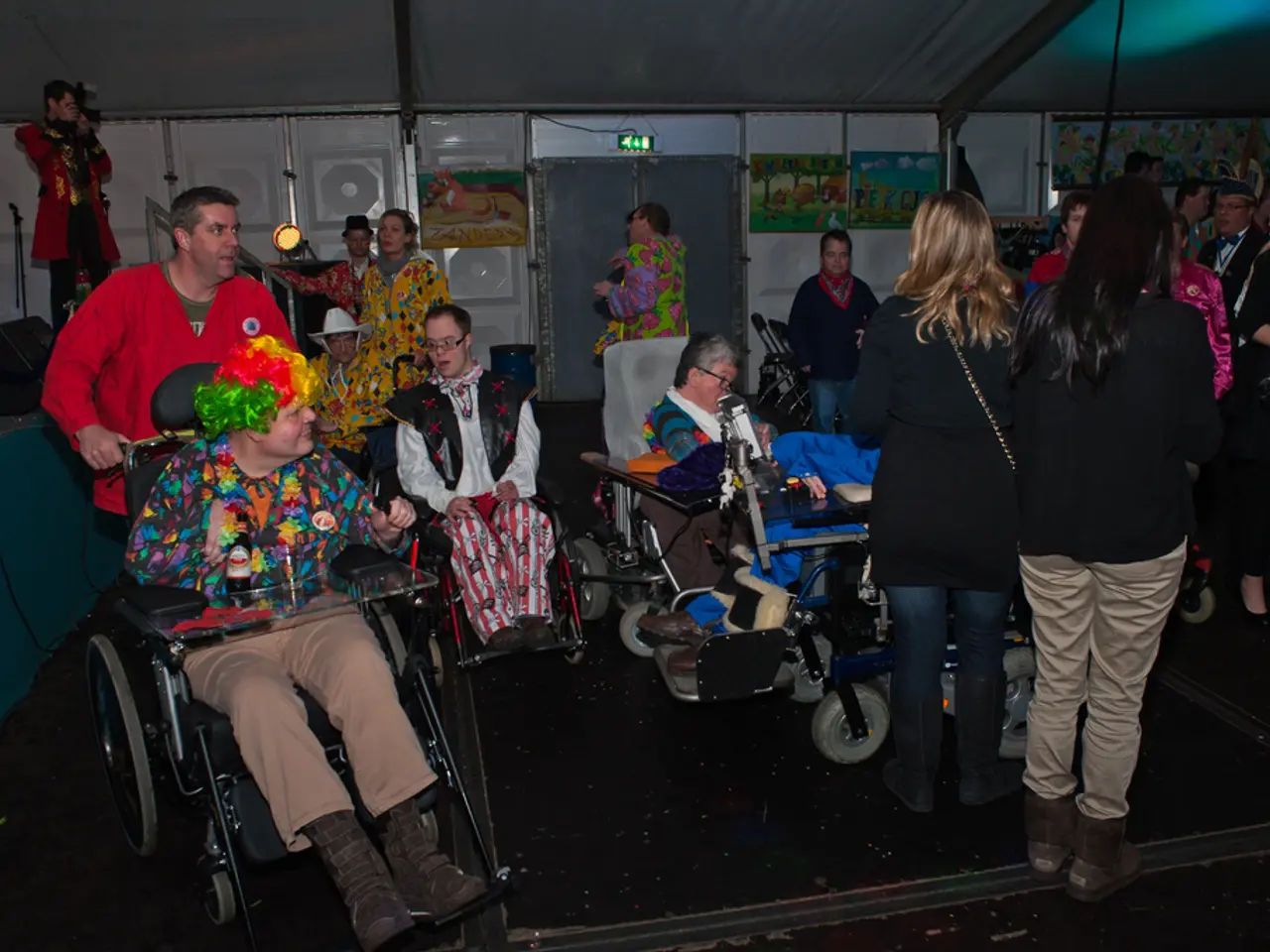Essential Guidelines for Using Restraints on Wheelchairs
In North America, wheelchair restraint regulations are a crucial aspect of ensuring the safety and stability of wheelchair users during transit across various modes of transportation. The rules, which apply to airplanes, buses, trains, taxis, and wheelchair-accessible limousines, aim to prevent movement and injury by requiring securement systems.
For air travel, while airlines are mandated to provide wheelchair assistance for passengers with mobility impairments, the primary regulations focus on assistance and carriage rather than in-flight wheelchair restraints. However, airlines must have procedures to properly secure wheelchairs before takeoff and during flight to ensure safety.
In the case of buses and trains (public transit and paratransit), regulations require robust wheelchair securement systems that comply with standards such as WC18, which certifies wheelchair tie-downs and occupant restraint systems meeting rigorous safety tests. These tiedowns secure the wheelchair to the vehicle floor using floor anchors and straps or docking systems, preventing movement during transit. Additionally, occupant restraints (similar to seatbelts) secure the person in the wheelchair to reduce injury risk in sudden stops or collisions.
Taxis and wheelchair-accessible limousines must provide accessible entry (ramps or hydraulic lifts) and securement systems. These vehicles are typically equipped with certified safety restraints and floor anchor systems designed to lock the wheelchair firmly in place during travel and occupant restraints for safety. They comply with regional accessibility laws, such as Ontario's Accessibility for Ontarians with Disabilities Act (AODA), ensuring legal and safety standards are met for wheelchair users.
The regulations emphasise the importance of ensuring that caregivers do not make patients feel trapped or helpless while using wheelchair restraints. It is essential to consult with the patient before adopting a new restraining method. All individuals in wheelchairs must use a seat belt while traveling in a vehicle, and the wheelchair itself must be tied down to the vehicle floor using tiedown straps to prevent movement during transit.
The Rehabilitation Engineering & Assistive Technology Society of North America (RESNA) has a useful resource on wheelchair restraint regulations, and the Centers for Medicare & Medicaid Services published a document stating that a patient has the right to free themselves at will. The Federal Aviation Administration (FAA) has established specific regulations for wheelchair use on airplanes, requiring seat belts and other restraint systems. The Americans with Disabilities Act (ADA) provides guidelines for wheelchair use on public transportation, including buses and trains, requiring securement systems for wheelchairs during transit.
In summary, North American wheelchair restraint regulations ensure safety by requiring:
- Physical securement of the wheelchair via certified tie-downs or docking systems anchored to the vehicle floor.
- Occupant restraint systems (seatbelts or harnesses) designed to keep wheelchair users safely restrained.
- Accessibility features such as ramps or lifts for safe boarding and disembarking.
- Compliance with standards such as the WC18 certification for tie-downs and regional legislation for accessibility (like AODA).
- Safe handling and accommodation policies in air travel, although the wheelchair itself is usually stored, and the user is seated in an aircraft seat with standard restraints.
This multi-modal approach ensures a high level of safety and dignity for wheelchair users during travel by protecting against wheelchair movement and occupant injury risks while maintaining accessibility. For more information, RESNA provides a free booklet on this subject.
- In the health-and-wellness sector, regulations for wheelchair restraints during medical-conditions management emphasize the importance of ensuring that caregivers provide a safe and comfortable experience for wheelchair users, avoiding making them feel trapped or helpless while using restraints.
- When embarking on travel, from health-and-wellness to lifestyle changes, individuals utilizing wheelchairs can expect rigorous wheelchair securement systems and occupant restraints across various modes of transportation such as airplanes, buses, trains, taxis, and wheelchair-accessible limousines, following science-backed standards for safety and stability.




